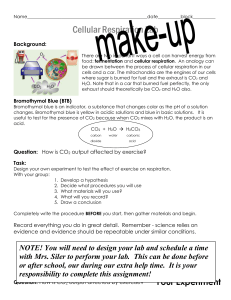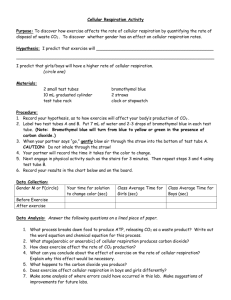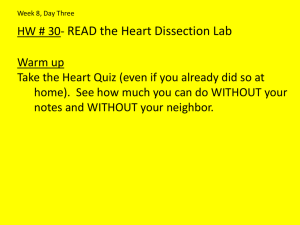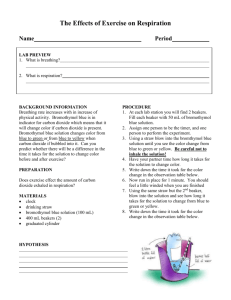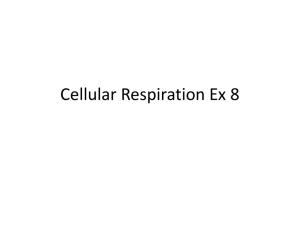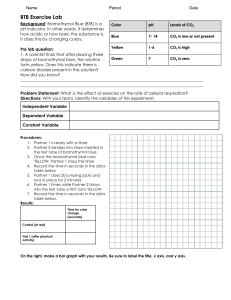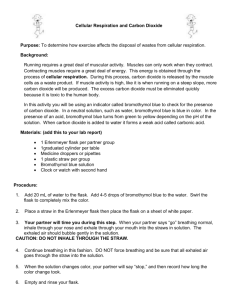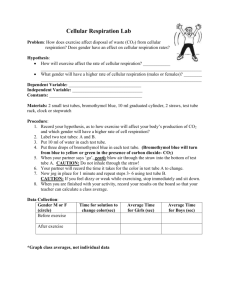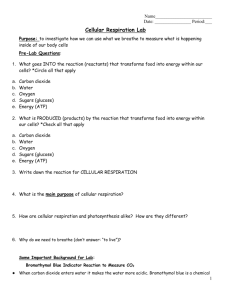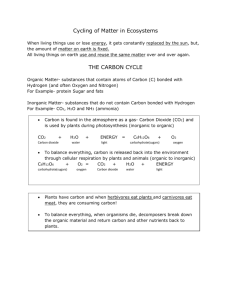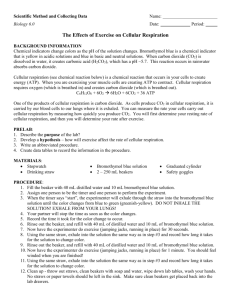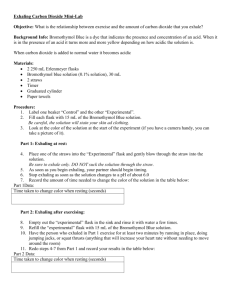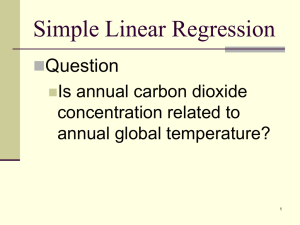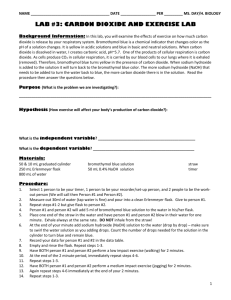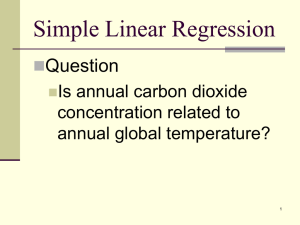Bromothymol Blue - Port Fest Baltimore 2015
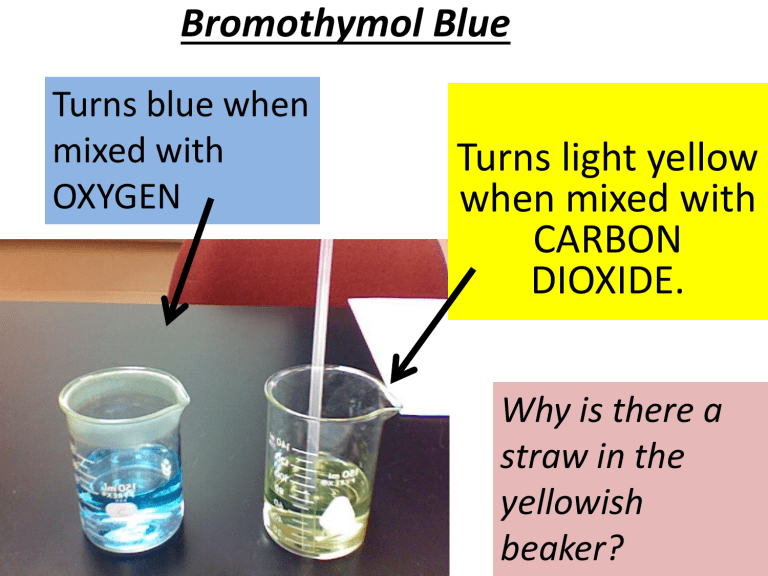
Bromothymol Blue
Turns blue when mixed with
OXYGEN
Turns light yellow when mixed with
CARBON
DIOXIDE.
Why is there a straw in the yellowish beaker?
Exercise Lab
Prelab
(Reactants of cellular respiration) ( Products of cellular respiration)
Oxygen + Sugar
Carbon Dioxide + Water + ATP
Energy
Define Metabolism/Metabolic Rate: The speed at which an organism makes energy from sugars.
Scientific Question: Does sitting or exercising release more Carbon Dioxide (CO
2
)?
Hypothesis:
Make your own before going into the lab! What do you think will happen?
Exercise Lab
Prelab Continued
Scientific Question: Does sitting or exercising release more Carbon Dioxide (CO
2
)?
Hypothesis:
Make your own before going into the lab! What do you think will happen?
Variables & Procedures:
Independent Variable: I am testing… What activity releases more CO2.
Dependent Variable: I am measuring… What activity will turn bromothymol blue into a yellow color faster?
Controls: Why is using the same person during the experiment important? Use METABOLISM in your answer.
Safety:
SAFETY!! You will be using a plastic bag at the top of your container to blow into the bromothymol blue. DO NOT LET ANY B. BLUE
GO INTO YOUR MOUTH!! While it is not poisonous it DOES NOT taste good! Let me know if you make a mistake and do so.
You will blow into the b. blue when you are
resting. Count how long it takes for the b. blue to turn light yellow (Use stop watch from phone)
Exercise and repeat the process.
Complete two trials for each type of activity.
**Only 1 person from each group is allowed to have a phone out for using stop watch.
After watching and listening to me please write down the procedures in your own words.
Basically, I just need to see that you’ve been paying attention and you know what the lab is about
Exercise Lab
Procedures
Exit Quiz
Explain in your own words how the products and reactants of photosynthesis and cellular respiration form a continuous cycle.
Use the following words:
1. Energy (light)
2. Energy (ATP)
3. Carbon dioxide (CO
2
)
4. Oxygen (O
2
)
5. Water
6. Sugar (glucose/carbohydrate)
